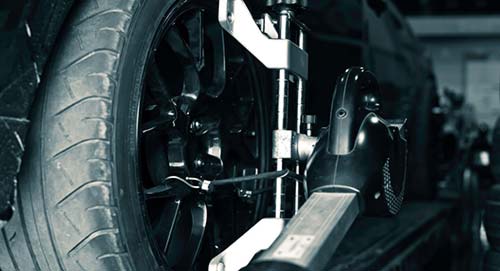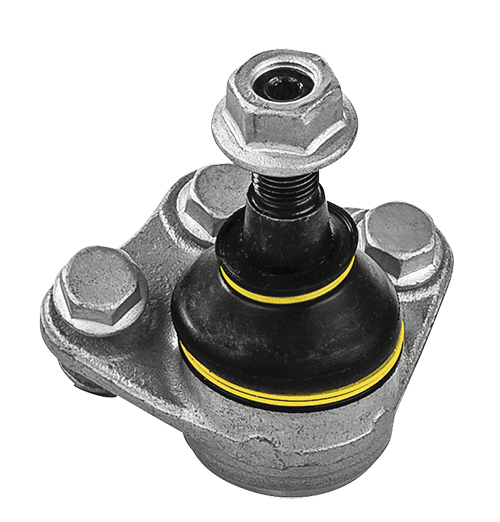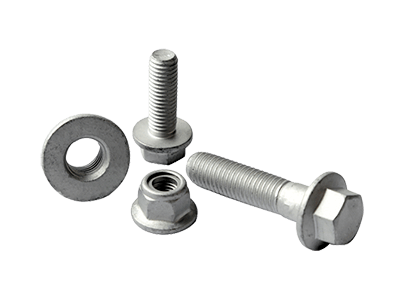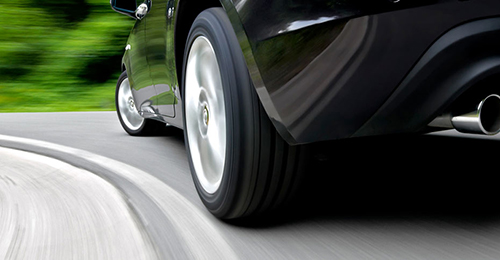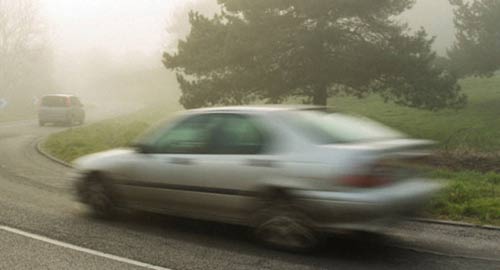Found in the suspension of virtually all modern cars, ball joints are an important part of the suspension system. They are one of the main suspension pivot points that connect the control arms of the vehicle to the steering knuckles or spindles. The front ball joints also allow the front wheels and suspension to move back and forth, as well as up and down, as the steering wheel is turned during driving and as the car moves over uneven road surfaces.
Modern ball joints aren’t serviceable, and many last the lifespan of your car. However, as ball joints play a crucial role in your suspension system, it’s important to recognize the signs that something might be wrong with them, and how to check to make sure. And, if you do notice a problem with one ball joint, it’s recommended to replace the damaged ball joint as well as its pair. This is because when one ball joint starts to fail, the other side is likely to follow soon.
What’s a ball joint? A quick refresher
Before we go any further, let’s take a quick look at what a ball joint is.
A ball joint is usually a ball-in socket design, lubricated with grease and covered with a dust boot. Modern ball joints are sealed, while this prevents dirt, grit and other impurities from damaging the joint, it also prevents maintenance. This means that if you have a problem with your ball joint, the entire assembly will usually need to be replaced.
Depending on the type of suspension, most cars have both upper and lower ball joints. The lower ball joints are usually larger and wear out faster due to the weight of the front of car that rests on them.
Click here to read our detailed article on ball joints.
There are a number of signs that let you know that your ball joints may be starting to wear out.

These include:
- Clunky or squeaky noises
- Drifting to the side
- Loose or shaky steering
- Uneven tyre wear
How can you check for worn ball joints?
It’s possible that the symptoms of worn ball joints develop slowly, so you don’t notice for a while. But, if you have noticed any of the symptoms above, or would just like to double check your ball joints, it’s best to first check your ball joints when driving before doing a visual inspection.
How to check your ball joints when driving
Checking your ball joints when driving is straightforward, simply:
1. Take your car out for a drive
Drive the vehicle on a public road at the speed limit and pay close attention to the engine, steering and overall performance of the car.
What to look out for
Vibrations – when a ball joint wears out, it becomes loose which can create a vibration that you can feel through the floor or the steering wheel while you drive.
Steering wheel wandering to the left or the right – worn ball joints cause the steering to pull from left to right on its own. This can also cause uneven wear on your tyres.
2. Drive over speed bumps
After driving at the speed limit, take it somewhere with speed bumps and drive it at a low speed. Stop and go a few times, and turn a few times.
What to look out for
Noise – this can be a clunking or squeaking noise. Clunking noises are caused by the worn ball joints rattling as the suspension travels up and down over the road. The squeaking noise is caused by the rubber boot that protects the grease inside the ball joint is damaged, the ball joint will start to squeak. These noises will get louder the more worn the ball joints become.
3. Turn the steering wheel
The last step is to park the car and turn the wheels back and forth a few times, while listening for noise from the ball joints.
How to check ball joints visually
After checking your ball joints while driving, it’s time for a visual and physical inspection. Before you start, make sure you have the following tools ready:
- Jack
- Jack stands
- Flashlight
- Pry bar
- Lug nut wrench
- Wooden blocks or wheel chocks
A visual and physical inspection has the following steps:
1. Check your tyre wear
Loose ball joints can’t keep your suspension aligned while you drive. This accelerates tyre wear by causing the rubber tread to touch the ground in an inconsistent way. If you notice feathering (i.e. uneven spots of wear on a tyre) or that the front of the wheels points out (i.e. toe-out), there’s a good chance that your ball joints will need further investigation. However, if the tyre wear is equal on both sides, then the issue is probably not your ball joints, but due to under-inflation of the tyres.
2. Loosen the lug nuts
Loosen the lug nuts so they are hand-tight. This will allow you to move the wheel around on its axis, without removing it completely.
3. Jack up the car and place wheel chocks behind the wheels
Jack the front of the car up and secure it on jack stands. Put wheel chocks or wooden blocks behind the back wheels to prevent the car from rolling. This will make it easier to test the ball joints.
4. Rock the tyre on its axis
Grasp the top and bottom of the tyre and rock it in and out along the wheel’s vehicle axis. If the ball joints are working well, there should be little to no play in this movement.
What to look out for
Noise and play from the top – this indicates a problem with the upper ball joint.
Noise and play from the bottom – this suggests a problem with the lower ball joint.
5. Remove the wheel
Remove the wheel and use a flashlight to visually check the upper and lower ball joints.
What to look out for
Can you see any signs of rust, damage to the dust boot, grease leakage or any other potential problem? If so, it’s probably time to replace your ball joint.
6. Pry the ball joint apart
Use the pry bar and attempt to pry the lower control arm and the steering knuckle (the two components connected by the ball joint).
What to look out for
Excessive amounts of play and movement or clicking sounds are a sign that your ball joints are too loose.
7. Put the wheel back on
After you have finished visually inspecting and testing the ball joint, replace the wheel, lower the car and torque the lug nuts.
8. Repeat with the other wheels
After you have finished the first wheel, you need to check the other three, by following steps 2-7.
Quality ball joints
When replacing your ball joints, it’s important to go for quality – after all, your ball joints have to support the weight of your entire car.
MOOG has a range of quality, premium ball joints for all makes and models. Check out our part finder to find the right ball joints for your car.
Or discover how to avoid abrasive wear on your ball joints with MOOG TV
The content contained in this article is for entertainment and informational purposes only and should not be used in lieu of seeking professional advice from a certified technician or mechanic. We encourage you to consult with a certified technician or mechanic if you have specific questions or concerns relating to any of the topics covered herein. Under no circumstances will we be liable for any loss or damage caused by your reliance on any content.
RELATED ARTICLES
The why and how of ball joint replacement
Ball Joints housing coating & Steel Cap
Flanged and zinc flake coated nuts, synthetic grease and metal sealing rings
How often to check steering and suspension systems?
Can you drive a car with broken suspension?
Your car and potholes
